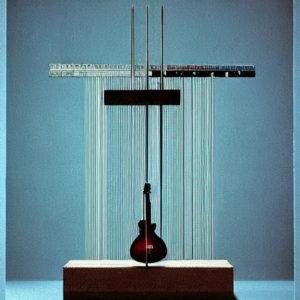Master Shred with these Shred Guitar Scales

Ahoy there, fellow Shredders! Are you looking to learn to Shred like the masters? Have you ever wondered how the great players achieve their level of skill and knowledge on the guitar? Then pay close attention, because I’m here to point you in the right direction with a practical guide on Shred guitar scales.
First things first: what the heck are guitar scales? Very simply, scales are a series of notes played in a specific order that make up the foundation of a musical piece. They provide the basis for melodies, harmonies, and all sorts of musical goodies. And when it comes to shredding, mastering scales is a crucial step.
While learning guitar scales is a lot easier than it may seem, it still takes some patience and practice. But trust me, it’s worth it. Imagine being able to effortlessly fly up and down the fretboard, impressing everyone with your fancy fingerwork. Sounds pretty darn good, don’t it?
Do Shred Guitar Scales even exist?
You’re likely here looking for some specific Shred guitar scales. Well, that is a common mistake. While there are certain scales that are favored for different genre’s of music, such as the Blues pentatonic scales for Blues and Rock styles and the harmonic and/or melodic minor scales for Neoclassical Shred styles, there really isn’t any such thing as a “Shred guitar scale.”

While different scales give a different sound and switching between them is a common strategy among the Shred Masters, what makes your playing fit within the style of Shred has a lot more to do with technique and musical context than any specific scale.
Scott Paul Johnson demonstrates how to use the CAGED system for learning all the minor Pentatonic scale positions.
What to use as Shred Guitar Scales
While there aren’t any specific Shred guitar scales per se, learning the standard pentatonic/minor Blues pentatonic, the minor scale and the Phrygian mode would put you in the ballpark of knowing the “standard Shred guitar scales” as these scales are some of the most common found in Shred guitar.
The trick is to get comfortable switching between them, but we’re getting ahead of ourselves. While every guitarist faces the temptation of rushing ahead, remember that patience and discipline are two characteristics that all of your favorite Shred legends have in common. Not a single one of them rushed ahead, so don’t you even think about it!
While it might take you some time to get to where you want to be, I promise it will be worth it in the end.
An example of how the Phrygian mode sounds in the context of Shred from a great YouTube guitar channel called NeoGeoFanatic
The Modes
Having a solid understanding of the modes is one of the most effective ways to become a Shred master. While learning all of the modes can seem like a daunting task, it’s a lot simpler than it looks if you know how to approach it.
I’d strongly recommend checking out the course that both introduced me to the modes and allowed me to master them up the entire fretboard. That course is The Infinite Shred Method by one of my favorite Shred masters, Dan Mumm. .
He’s come up with a truly unique way of learning the modes, where you only have to learn simple patterns starting with just 3 patterns of 3 notes that repeat across the fretboard to give you a new perspective of the fretboard and a clear picture of how the mode patterns repeat.
This’ll give you an intuitive understanding of how the modes and the fretboard work, so you can improvise all over the place with ease and come up with infinite patterns of your own.
Here's a great review of Dan Mumm's Infinite Shred Method by Sandesh Balasubrahmanyam
Tips for mastering shred guitar scales
So, without further ado, let’s dive into some tips for mastering some scales to use as shred guitar scales:
- Start with the basics. Before you dive into advanced scales, make sure you have a solid foundation in the basic ones. This includes the major and minor scales, as well as the pentatonic scale (which is a fan favorite among guitarists).
- Practice! Like I said before, learning scales takes some time. You don’t want to just memorize them but you need to lock them into your muscle memory for them to be useful to you for Shred. With patience and consistent practice, you’ll get there faster than you’d think. Don’t get discouraged if you’re not a shredding master overnight – it takes time.
- Experiment with different fingerings. There are multiple ways to play the same scale, and experimenting with different fingerings can help you find what works best for you. Remember that, while there are certain recommended fingerings for scales when you are learning them, a scale’s fingering will change based on the context of what you’re using it for and doesn’t always stay the same.
- Play along with a metronome. This will help you with timing and rhythm, and will also give you a clear way to measure your progress. That way you can set specific speed goals and know for sure when you’ve achieved them. More importantly, starting slowly with a metronome and working your way up ensures that you will learn each scale with clarity and avoid bad habits that lead to sloppy playing. And, as I’ve said before, sloppy playing is the antithesis of Shred!
- Mix it up. Don’t just stick to one scale – try out different ones and see which ones you enjoy playing the most. The more variety you have in your practice routine, the better. Once you’ve mastered 2 or more scales, try practicing different ways to combine or link up the different scales.
Improvise over backing tracks
Once you have the scales memorized and internalized, get some backing tracks and start practicing coming up with melodies within the scales that go with the backing track by just playing around within the scale.
If you’re using a minor scale or minor pentatonic, make sure to find a backing track in minor. If it’s in C minor, you’ll need to use a C minor or C minor pentatonic scale.
When you’ve mastered the modes across the fretboard, you’ll be able to practice improvising while switching between the modes as well as use the modes to connect patterns in different positions. This is how the Shred Masters are able to jump all over the guitar neck while shredding.
Want some killer backing tracks to Shred over? Check out Maxxxwell Carlisle’s epic collection of original backing tracks.

Use a metronome!
Auto Amazon Links: No products found. http_request_failed: A valid URL was not provided. URL: https://ws-na.amazon-adsystem.com/widgets/q?SearchIndex=All&multipageStart=0&multipageCount=20&Operation=GetResults&Keywords=B0B12CJC6G&InstanceId=0&TemplateId=MobileSearchResults&ServiceVersion=20070822&MarketPlace=US Cache: AAL_6b57aab0b6f3cf38e94813c75b329d6f
Transposing scales
Friends, now let me tell you about transposing scales.
You don’t have to memorize a whole new scale for every key you wanna play in. Most scales can be moved around the neck, what we call “movable scale patterns,” because they don’t use open notes. It’s like how you can move barre chords around to get different chords without changing your finger placement.
So if you learn a movable scale pattern in the key of C minor, for example, you can play that same pattern in different spots on the guitar to change the key. We call this “transposing.” It’s simple, all you gotta do is know the root note of the scale, usually the first note, and the name of the new root note you wanna transpose to.
Let’s say you’re playing the C minor scale on the 3rd fret of the 5th string. If you move that pattern up to the 5th fret, it becomes a D minor scale. Move it up to the 7th fret, and it’s an E minor scale.
Once you’ve gotten comfortable improvising over some backing tracks, try finding tracks in different keys and practice transposing your scales to match. And when you’re feeling real confident, try working with tracks that switch between two different keys, and transpose your scales on the fly while you improvise.
So there you have it, folks – a practical guide for mastering scales for Shred Guitar. Remember, it takes time and practice, but with persistence, you’ll be shredding like a pro in no time.
Shred on!
